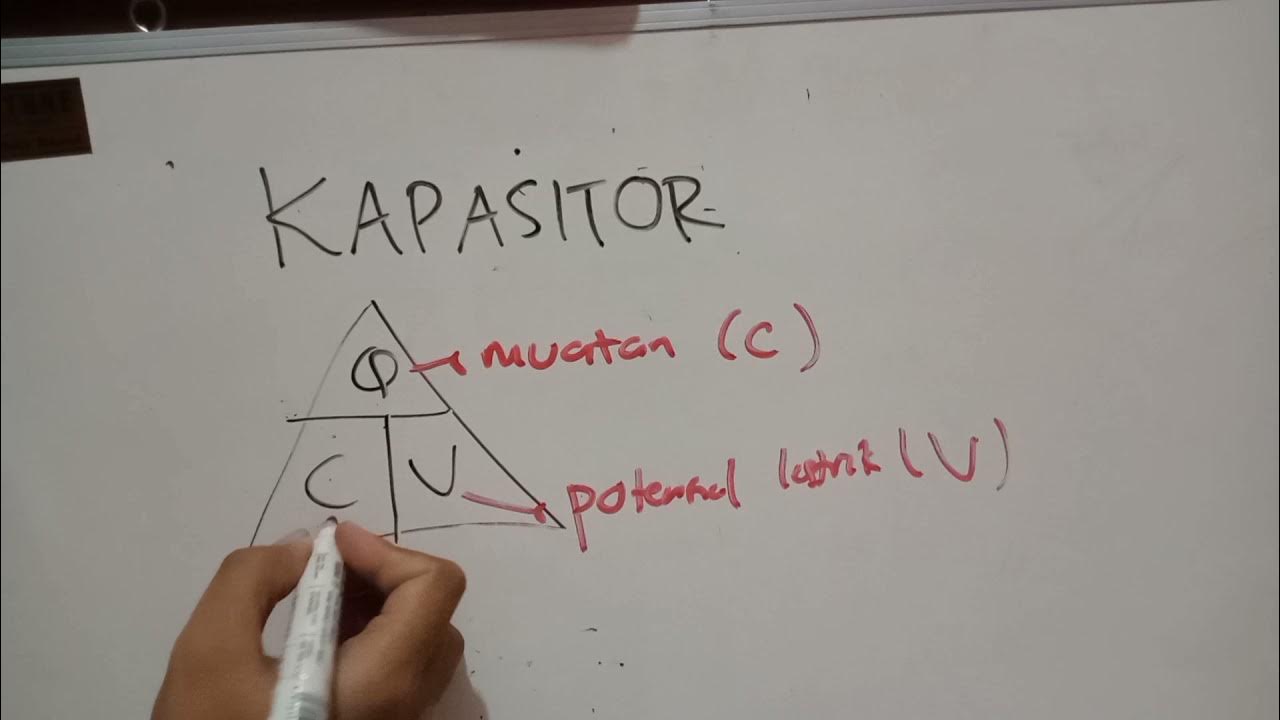Prática de Eletromagnetismo 2025.1 | Simulação - Experimento 2: Bruna Martins Morais Mota
Summary
TLDRIn this detailed explanation, Bruna Martins Moraes Mota presents a hands-on approach to measuring and understanding capacitors. She walks through simulations of different types of capacitors—flat, cylindrical, spherical, and conical—using Maxwell's software. Through various modeling techniques and experiments, Bruna demonstrates how electric fields, materials, and geometries affect capacitance. She also shares practical methods for measuring capacitance without commercial tools, such as using resistors, multimeters, and signal generators. The simulations provide valuable insights into the behavior of capacitors and their storage capacity, emphasizing the importance of computational modeling in understanding electrostatic systems.
Takeaways
- 😀 Capacitors store electrical energy and their capacitance can be measured by observing their charging and discharging behavior.
- 😀 You can measure capacitance without a specific device by using a simple circuit with a resistor and capacitor, observing the charging time.
- 😀 An alternative method to measure capacitance involves using a signal generator and observing how the capacitor interacts with an alternating current circuit.
- 😀 Using an oscilloscope allows you to visualize the charging and discharging curve of a capacitor, providing a way to measure capacitance.
- 😀 Another method to measure capacitance is to compare the behavior of an unknown capacitor to a known one using the same circuit.
- 😀 Maxwell's software was used to simulate different types of capacitors and calculate their capacitance based on geometry and material.
- 😀 The flat parallel plate capacitor was simulated with copper plates and polyethylene dielectric, resulting in a well-distributed electric field between the plates.
- 😀 In the cylindrical capacitor simulation, aluminum was used for the conductors and polyethylene for the dielectric, with simulated capacitance closely matching the theoretical value.
- 😀 The spherical capacitor simulation showed an electric field decreasing with the inverse square of the distance, and the capacitance was consistent with theoretical predictions.
- 😀 A variation of the spherical capacitor was simulated with two different dielectrics, highlighting how material properties affect the electric field and capacitance.
- 😀 The conical capacitor simulation demonstrated how irregular geometry and different materials affect the electrostatic behavior, and while no exact analytical formula exists, the results were reasonably approximated using series and parallel capacitor theory.
Q & A
What is the primary function of a capacitor?
-The primary function of a capacitor is to store electrical energy. It works by charging and discharging when a voltage is applied.
How can capacitance be measured without a specific capacitance meter?
-Capacitance can be measured using a simple circuit with a resistor and capacitor, observing how long it takes for the capacitor to charge. The charging time can give an estimate of the capacitance value.
What is one way to measure capacitance using a signal generator?
-By connecting the capacitor to an alternating current circuit and observing how it interferes with the signal. This can also be done with an oscilloscope, where you can see the charging and discharging curves.
How can we measure capacitance by comparing two capacitors?
-Capacitance can be measured by comparing the behavior of an unknown capacitor with a known one in the same circuit. The results from both capacitors can then be compared to estimate the unknown capacitance.
What software was used for the capacitor simulations in the transcript?
-Maxwell's software was used for the simulations, specifically designed to study the behavior of the electric field and calculate capacitance based on geometry and materials.
How were the flat capacitors modeled in Maxwell?
-The flat capacitors were modeled with two parallel conductive plates made of copper, with a dielectric material (polyethylene) between the plates. The simulation calculated the capacitance based on the electric field distribution.
What type of dielectric material was used in all the simulations?
-Polyethylene was used as the dielectric material in all the capacitor simulations, and its permittivity was manually adjusted in the material properties.
What was the purpose of refining the mesh in the simulations?
-Refining the mesh was done to capture the field gradients more accurately, especially around the edges of the plates and the interfaces with the electrical wires, where field variations are most pronounced.
What difference did the simulation of the conical capacitor highlight?
-The simulation of the conical capacitor highlighted how the combination of geometry and different dielectric materials affects the electrostatic behavior of a system. This made the simulation more complex and required careful setup.
What was the overall result of comparing the simulation results to theoretical values?
-The simulation results closely matched the theoretical values, with small expected variations, indicating that the modeling was accurate. Any differences were attributed to manual calculation approximations and limitations in the model discretization.
Outlines

This section is available to paid users only. Please upgrade to access this part.
Upgrade NowMindmap

This section is available to paid users only. Please upgrade to access this part.
Upgrade NowKeywords

This section is available to paid users only. Please upgrade to access this part.
Upgrade NowHighlights

This section is available to paid users only. Please upgrade to access this part.
Upgrade NowTranscripts

This section is available to paid users only. Please upgrade to access this part.
Upgrade NowBrowse More Related Video

Capacitores Explicados - Los fundamentos funcionan los condensadores. Principio de funcionamiento

Kapasitor, Simulasi Phet, Fisika kelas XII

How to use a DMM, Digital Multi Meter

Teknik Pengujian Dan Pengukuran Pada Proses Perawatan dan Pemeliharaan Peralatan Elektronika #Part1

Elektronika Dasar 005 Capasitor 01 Universitas Jember

RANGKAIAN LISTRIK : Respons Alami dan Respons Steady State ( Part 25 )
5.0 / 5 (0 votes)